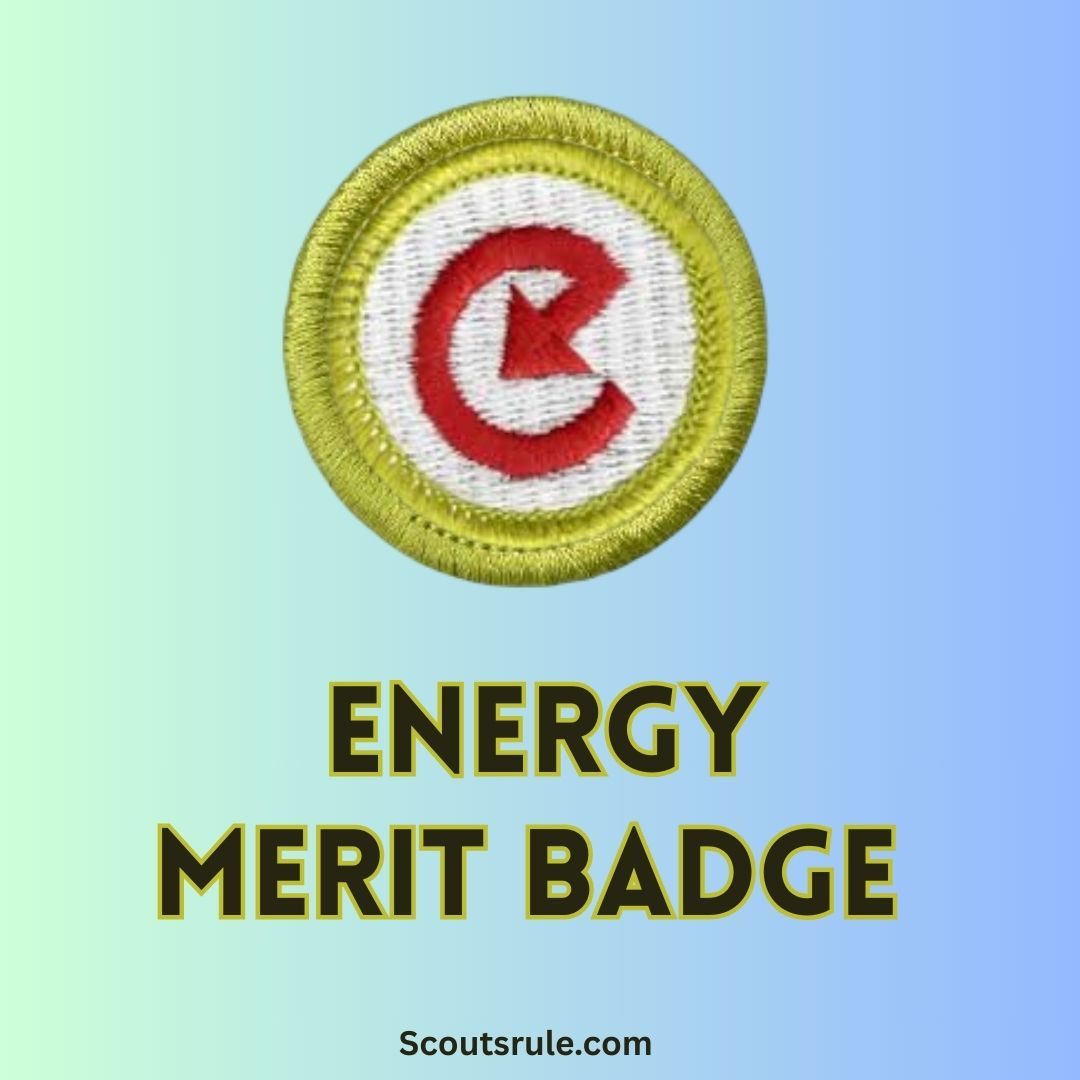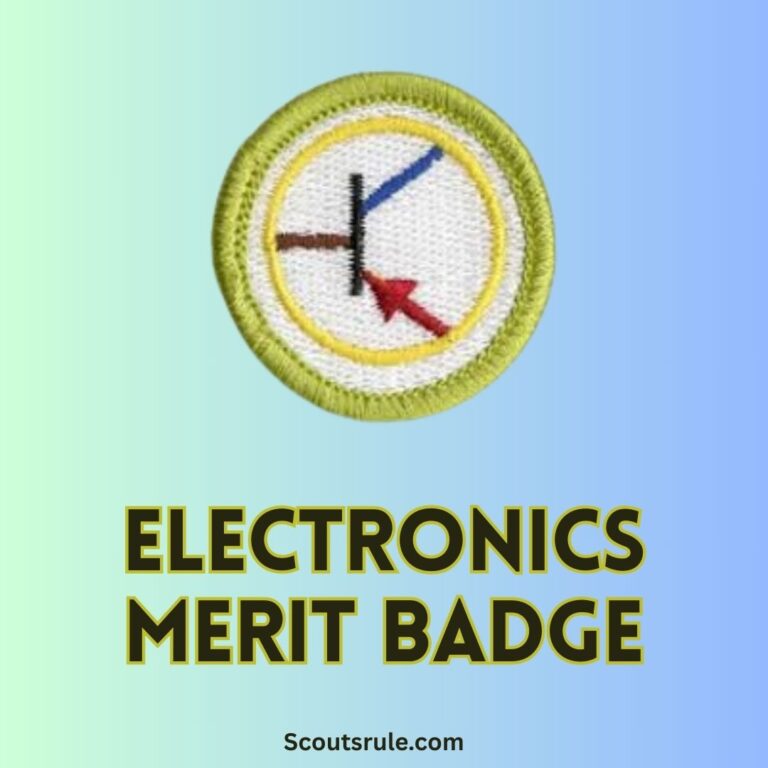
For many young explorers, earning a merit badge is not only a test of skill but also an opportunity to develop a deeper understanding of the world around them. The Energy Merit Badge, in particular, challenges Scouts to investigate energy in all its forms—from the science behind everyday devices in your home to larger-scale applications in society. In this guide, we will explore all aspects of the badge requirements, practical projects, and real-life applications that help demystify the essential subject of energy. The journey will take you through researching credible sources, understanding energy conversions, constructing simple systems, conducting home energy audits, and discovering ways to reduce energy waste in your school or community.
Post Contents
- 1. Energy Merit Badge Requirements
- 2. Finding and Discussing Credible Energy Information
- 3. Energy Conversions in Common Devices
- 4. Constructing a Simple System
- 5. Understanding Energy Efficiency
- 6. Conducting an Energy Audit of Your Home: A 14-Day Log
- 7. Reducing Energy Waste in Your School or Community
- Energy Merit Badge Guide: A Comprehensive Journey Through Energy Science and Careers
- 1. Energy Merit Badge Requirements
- 2. Understanding Energy Use Through Visuals and Insights
- 3. Energy Conversions in Common Devices
- 4. Constructing a Simple System
- 5. Understanding Energy Efficiency
- 6. Conducting an Energy Audit of Your Home
- 7. Reducing Energy Waste in Your School or Community
- 8. Enhancing Energy Systems
- 9. Exploring Careers in Energy
- 10. Final Thoughts and Further Exploration
- Further Steps in Your Energy Journey
- Further Exploration and Activities
- Final Thoughts
1. Energy Merit Badge Requirements
Earning the Energy Merit Badge means diving into the vast realm of energy science. You will need to demonstrate knowledge in several key areas, such as:
- Understanding the basic concepts of energy in everyday devices and systems.
- Conducting research to find and discuss credible energy information.
- Performing experiments and demonstrations that illustrate energy conversion.
- Building and testing a simple energy system that converts one form of energy to another.
- Learning to assess efficiency by examining energy audits and understanding energy usage.
- Proposing methods to reduce energy waste at home, at school, or in your community.
The merit badge requirements are designed to encourage both theoretical understanding and practical application. You are encouraged to work with mentors, conduct experiments, and engage your environment through projects that reveal how energy moves and transforms in various systems.
2. Finding and Discussing Credible Energy Information
Before you can dive into hands-on experiments, it’s crucial to understand the foundation of energy science from reliable sources. Here are some steps to guide your research:
- Identify Trusted Sources: Look for peer-reviewed articles, government publications (such as those from the U.S. Department of Energy), reputable science news outlets, and educational institutions. Websites ending in .edu or .gov are a great starting point.
- Evaluate Information: Consider the publication date, the author’s credentials, and whether the site presents evidence-backed data. Learn to cross-reference information from several sources to ensure accuracy.
- Document and Discuss: As you gather energy facts, keep a detailed journal. Write down your findings on various forms of energy, how energy is measured, global energy trends, and conservation strategies.
- Group Discussions: Involve your Scout group or family in discussions about what you find. Explain energy concepts in simple terms and ask questions to solidify your understanding.
This research phase lays the groundwork for more practical experiments and ensures that all your subsequent projects are built on a solid scientific foundation.
3. Energy Conversions in Common Devices
Energy conversion is a fundamental concept in physics and engineering. Every time you use an appliance or electronic device, energy is transformed from one form to another. Let’s examine these conversions with some everyday examples:
3.1 Toaster: Electrical Energy to Heat Energy
A toaster is a familiar household item that works by converting electrical energy into heat energy. When you plug in a toaster and press the lever, electrical power runs through metal coils inside, which have high electrical resistance. This resistance causes the coils to heat up through a process known as Joule heating, and this heat is then radiated to toast the bread.
- Key Points:
- Electrical Input: The energy comes from the wall outlet.
- Resistance Heating: The metal coils heat up due to resistance.
- Heat Output: The heat energy browns the bread.
- Efficiency: Although most of the electrical energy is converted to heat, a small percentage is lost as light or sound.
3.2 Lightbulb: Electrical Energy to Light (and Heat) Energy
Lightbulbs are ubiquitous. They are designed to produce light by converting electrical energy through a filament or semiconductor. Incandescent bulbs produce light by heating a metal filament until it glows; however, a large portion of the energy is emitted as heat rather than light. In contrast, LED bulbs are more efficient, converting a higher proportion of electrical energy into light with much less heat.
- Key Points:
- Incandescent Bulbs: Convert electrical energy into both light and a lot of heat.
- LED Bulbs: Use semiconductors to emit light efficiently with minimal heat loss.
- Energy Considerations: This contrast in efficiency is why switching to LED technology has been a major focus in energy conservation efforts.
3.3 Cell Phone: Chemical to Electrical to Various Energy Forms
A cell phone is an excellent example of a multi-stage energy conversion. The process begins with the chemical energy stored in the battery. The battery, through an electrochemical reaction, converts chemical energy into electrical energy. This electricity then powers the phone’s operations, such as lighting up screens, making sounds, vibrating, and even converting some to radiofrequency energy for communication.
- Key Points:
- Battery Energy: Stored chemical energy in rechargeable batteries.
- Conversion Process: The battery produces electrical energy that powers all functions.
- Multiple Outputs: The phone converts energy into light, sound, and radio signals, among other forms.
These examples provide a window into how everyday devices harness and convert energy. Understanding these processes deepens your grasp of energy flow and prepares you for building and analyzing your own systems.
4. Constructing a Simple System
Practical experiments are at the heart of earning the Energy Merit Badge. Two key projects in this area involve creating systems that demonstrate energy conversion in real time.
4.1 Solar Energy to Electrical Energy
Constructing a system that converts solar energy into electrical energy is a valuable experiment. Here’s a step-by-step guide:
- Materials Needed:
- Small photovoltaic (PV) solar panel
- Electrical wires
- A multimeter (to measure voltage and current)
- A small battery or LED (for demonstration purposes)
- Procedure:
- Connect the PV Panel: Attach the leads of the solar panel to your multimeter. Note the voltage output under direct sunlight.
- Store or Convert Energy: Connect the panel to a small battery or directly power an LED. Observe how sunlight is converted into electrical energy that can be stored or used immediately.
- Analyze the System: Record the output under different conditions (e.g., direct sunlight, partial shadow) to understand how environmental factors affect efficiency.
- Discussion Points:
- How does the intensity of sunlight affect the output voltage and current?
- What improvements might increase the efficiency of this conversion?
- Can this system be scaled up for practical applications?
4.2 Electrical Energy to Mechanical Energy
Another fascinating project is creating a system that converts electrical energy into mechanical energy. A simple demonstration can be made with a small DC motor, which exemplifies this conversion.
- Materials Needed:
- DC motor
- Battery pack
- Switch
- Connecting wires
- A small fan blade or propeller attached to the motor shaft
- Procedure:
- Circuit Assembly: Connect the battery pack through a switch to the DC motor.
- Activation: Close the circuit by flipping the switch. The motor will convert the battery’s electrical energy into mechanical energy, causing the propeller to spin.
- Observation and Measurement: Record the speed of the motor and see how changes to the circuit affect performance.
- Discussion Points:
- How does changing the voltage affect the motor’s speed?
- What are the energy losses in this small system (e.g., friction, heat)?
- How might you improve the conversion efficiency?
These experiments illustrate the basic principles behind solar panels and electric motors while reinforcing important scientific concepts like energy conservation and efficiency.
5. Understanding Energy Efficiency
Efficiency is all about maximizing the useful output from the energy input and minimizing losses. Every system, no matter how well designed, will always incur some energy loss. Understanding these losses helps engineers and everyday users alike to find ways to improve efficiency.
5.1 Parts of the System Affected by Energy Movement
Every energy system consists of:
- Energy Input: The initial source (such as a battery, gas, or the sun).
- Energy Conversions: Processes that transform input energy to another form.
- Energy Transmission: How energy moves through the system.
- Energy Output: The useful work or service provided by the system, like lighting a room or powering a motor.
- Energy Losses: Inefficiencies such as heat loss, friction, or resistance.
Discussing each component helps you map where energy is used effectively and where it is wasted.
5.2 Naming the System’s Primary Source of Energy
Identify the primary energy source for any system you study. In your solar panel project, it’s the sun. In a household appliance like a toaster, it’s electricity from the power grid. Recognizing this helps in understanding how changes to the input can affect the overall system.
5.3 Identifying the Useful Outcomes of the System
Every system is built with a purpose:
- Utility: What is the system meant to do? For a toaster, it’s to toast bread.
- Measured Output: Whether it’s light intensity from a bulb or the speed of a motor, measuring the output helps determine the efficiency.
- User Impact: Consider how the outcomes affect everyday life—saving time, energy, or money.
5.4 Identifying the Energy Losses of the System
No system is 100% efficient:
- Heat Losses: Common in electrical devices and motors.
- Friction: In mechanical systems, friction can reduce performance.
- Transmission Losses: Energy loss can occur when electricity travels through wires.
- Reflection or Sound: In devices like lightbulbs, not all energy converts to the intended form.
By breaking down a system into its useful outcomes versus its losses, you gain insights into the ways design improvements can be made.
6. Conducting an Energy Audit of Your Home: A 14-Day Log
An energy audit is a practical way to learn about energy consumption and to identify opportunities for conservation. For the Energy Merit Badge, Scouts often conduct a 14-day energy audit at home, which involves tracking energy use and identifying areas for improvement.
6.1 Types of Energy Used in Your Home
Begin by documenting the different forms of energy your household consumes:
- Electricity: Keep a daily record of how much electricity is used by appliances, lighting, heating, and cooling.
- Natural Gas: Track the consumption used for heating, cooking, and sometimes water heating.
- Wood (If Applicable): In some rural homes, wood is used for heating or cooking.
- Oil (If Applicable): Oil may be used in certain areas for heating.
- Liquid Petroleum Gas (LP Gas or Propane): Note usage in kitchens, heaters, or other systems.
6.2 Transportation Fuel Use: Family Car or Vehicle
Examine another critical aspect by auditing your family vehicle’s energy use:
- Fuel Type: Identify whether your vehicle uses gasoline, diesel, or even electricity.
- Fuel Consumption and Mileage: Record the average fuel consumption per trip or per day.
- Total Miles Driven: Keep a log during the 14-day period to calculate efficiency.
Example of a 14-Day Log
Below is a simplified table example that can be adapted for your log:
| Day | Electricity (kWh) | Natural Gas (therms) | Wood (hours burned) | Oil (liters) | LP Gas (cubic feet) | Fuel Type (Car) | Miles Driven | Fuel Consumed (gallons) |
|---|---|---|---|---|---|---|---|---|
| 1 | 20 | 2 | 1 | — | 30 | Gasoline | 35 | 2.0 |
| 2 | 18 | 1.8 | 1.5 | — | 28 | Gasoline | 40 | 2.2 |
In your log, list the daily use for each energy type, add notes about unusual spikes (perhaps due to extreme weather or special events), and calculate averages over the period.
6.3 Ways to Use Energy Resources More Wisely
After completing your audit, use the data to assess:
- Energy Use in Daily Life: Identify which activities or appliances use the most energy. Perhaps turning off lights when not in use or reducing heavy appliance use during peak hours can make a significant difference.
- Sustainable Energy Sources: Research and list sustainable alternatives for your home. Solar panels, wind turbines, or even improved insulation can reduce reliance on fossil fuels.
- Reuse and Recycling: Discuss how reusing materials and recycling not only conserves resources but also saves energy. For example, recycling aluminum can save a significant amount of energy compared to producing it from raw materials.
By completing an audit, you will gain not only a better understanding of energy consumption but also practical insights into energy conservation techniques that can lead to both cost savings and a reduced environmental footprint.
7. Reducing Energy Waste in Your School or Community
Finally, the Energy Merit Badge encourages Scouts to extend their learning beyond the home. Consider ways to reduce energy waste in places where you spend a lot of time, like your school and community. Here are some actionable ideas:
7.1 Wasting Energy by Leaving Lights On in Empty Rooms
- Problem: Leaving lights on unnecessarily is a simple yet common wasteful practice.
- Solution: Develop a habit to turn off lights when leaving a room. Advocate for motion-activated sensors in school corridors and classrooms.
7.2 Overheating or Overcooling Buildings
- Problem: Improper thermostatic settings or poorly maintained HVAC systems can lead to significant energy losses.
- Solution: Organize an awareness campaign or educational workshop on the importance of correct temperature settings, particularly during extreme weather seasons.
7.3 Wasting Water and Energy with Inefficient Faucets and Toilets
- Problem: Inefficient fixtures not only waste water but also the energy used to pump and heat that water.
- Solution: Encourage your school or community center to install water-saving devices. Even small changes, like using low-flow faucets or dual-flush toilets, can cut down on both water and energy use.
7.4 Leaving Computers and Electronics On Overnight
- Problem: Many schools leave computers, projectors, and other electronic devices on when they are not being used.
- Solution: Advocate for automatic sleep or shutdown modes, and organize an “energy save” campaign among students and staff.
7.5 Wasting Fuel with Inefficient School Buses for Short Trips
- Problem: Older buses or vehicles that are not well-maintained can use more fuel than necessary, especially on short or frequent trips.
- Solution: Propose energy audits for school fleets and suggest improvements, such as regular maintenance, route optimization, or even considering alternative fuel options.
Working on these projects can lead to measurable improvements in energy conservation in your school or community, and they adequately demonstrate the real-world impact of energy efficiency.
Below is a comprehensive 2,500‐word article for your “Energy Merit Badge Guide” that weaves together theory, hands‑on projects, data analysis, and career exploration. Enjoy this deep dive into energy science, its practical applications, and related career opportunities.
Energy Merit Badge Guide: A Comprehensive Journey Through Energy Science and Careers
Earning the Energy Merit Badge is not just about ticking off a list of requirements—it is about embarking on a journey to understand how energy shapes our world. This guide is designed to meet the merit badge requirements, delve into energy conversions in everyday devices, construct simple systems, perform energy audits, and explore modern energy systems along with career opportunities in the energy sector. You will learn how scientific inquiry, real‑world data, technological innovation, and economic assessment all merge to create a holistic understanding of energy.
1. Energy Merit Badge Requirements
The Energy Merit Badge challenges Scouts to explore energy on both theoretical and practical levels. The badge requires you to:
- Research and Discuss Credible Energy Information: Develop the skills to identify trusted sources, analyze energy trends, and understand global and domestic energy policies.
- Explore Energy Conversions: Investigate how energy is transformed in everyday devices—from a toaster’s electric heating element to a cell phone’s multi‐stage energy conversion process.
- Build Simple Energy Systems: Construct experimental setups that simulate the conversion of solar energy to electricity or electrical energy to mechanical energy.
- Assess Energy Efficiency: Investigate the components of energy systems, including inputs, useful outputs, and losses attributed to friction, resistance, or heat.
- Conduct a Home Energy Audit: Track household energy usage over a 14‑day period to understand consumption patterns and identify potential savings.
- Propose Ways to Reduce Energy Waste: Develop methods to reduce waste in local communities, schools, and families—focusing on everything from leftover lights to inefficient heating and cooling.
In addition to these hands‑on projects, this guide also expands the energy merit badge requirements to help you visually and analytically understand the nation’s energy landscape, examine modern energy systems, and explore emerging career paths in energy.
2. Understanding Energy Use Through Visuals and Insights
Visual data and informative graphics are powerful tools in understanding complex topics. In the energy realm, these visual aids can help answer critical questions about how energy is produced, consumed, and conserved in the United States and worldwide.
2.1 What Supplies Most of America’s Energy?
The energy landscape in the U.S. is multifaceted. Although the relative proportions change year to year, fossil fuels—primarily natural gas, petroleum, and coal—traditionally supply a significant portion of the nation’s energy. In recent years, renewable sources (like solar, wind, and hydroelectric power) have grown steadily in importance, while nuclear energy continues to provide a considerable share of carbon‑free electricity. Visual representations such as pie charts and bar graphs can effectively depict the percentage breakdown of energy sources by fuel type and help reveal shifts toward greener technologies.
2.2 How Much Energy Does the U.S. Import?
Despite being one of the world’s largest energy producers, the U.S. still imports significant energy, particularly crude oil and refined petroleum products. Maps and infographics illustrating import routes, volumes, and contributing countries can provide insight into the global energy market. This visual analysis helps in understanding the national energy balance and emphasizes the importance of domestic energy security and strategic reserves.
2.3 Who Uses the Energy?
Energy use in America is divided among residential, commercial, industrial, and transportation sectors. A series of flowcharts or segmented graphs can explain which sectors use the most energy and why. For example, transportation is a major consumer of petroleum-based fuels—with vehicles, airplanes, and ships all requiring energy—while industrial processes lean heavily on electricity and natural gas for manufacturing and refining processes.
2.4 How Does the U.S. Generate Electricity?
In the U.S., electricity generation is a complex mosaic. Traditional power plants fueled by fossil fuels (coal, natural gas, and oil) coexist with renewable energy installations like wind turbines, solar arrays, and hydroelectric dams as well as nuclear reactors. Diagrams outlining power plant components (generators, turbines, cooling towers) and flowcharts that illustrate the energy flow from resource extraction to electricity delivery can clarify the entire process. These visuals also help explain the distribution of energy generation across different regions of the country.
2.5 What Are the World’s Energy Reserves?
A global perspective shows us that energy reserves are unevenly distributed. Maps that delineate the location of fossil fuel reserves—oil-rich regions in the Middle East, natural gas deposits in Russia and North America, and coal reserves in Asia—are invaluable. Additionally, visual representations of renewable resources (such as solar intensity maps or wind corridor charts) highlight the potential for sustainable energy worldwide. These diagrams help Scouts understand the geopolitical and economic impacts of energy distribution and design.
2.6 How Costs Shape Energy Use
Energy costs affect every facet of production and consumption. Graphs plotting the historical price fluctuations of oil, natural gas, and electricity show how market forces, political events, and technological advancements play pivotal roles. Cost analyses can be broken down to compare the levelized cost of energy (LCOE) for various technologies, making it clear why renewable energy sources are competitive with fossil fuels in many regions. This section, enhanced with cost‑benefit analyses, helps illuminate how energy prices influence policy decisions and everyday life.
3. Energy Conversions in Common Devices
Understanding energy conversions in everyday devices provides tangible examples of scientific principles at work.
3.1 Conversions in the Toaster
A toaster converts electrical energy into heat energy through resistance heating. Electrical current flows through metal coils that heat up due to resistance, converting almost all the electricity into the heat that crisps your bread. This example illustrates how energy is transformed but also highlights losses due to occasional light or minor sound production.
3.2 Lightbulbs: Converting Electricity to Light (and Heat)
Lightbulbs offer a clear demonstration of energy conversion. In incandescent bulbs, electrical energy heats a tungsten filament until it glows, though a significant portion of the energy is wasted as heat. In contrast, LED bulbs use semiconductor technology to convert electricity more efficiently into light, producing minimal heat. Diagrams comparing these two processes provide a visual understanding of efficiency differences and underscore the importance of energy-saving practices.
3.3 Multi‑Stage Conversion in a Cell Phone
A cell phone is a complex device that converts stored chemical energy into electrical energy, which in turn is used to generate light, sound, and radiofrequency signals. Its battery stores chemical energy that is transformed through an electrochemical reaction. The device’s circuitry then distributes electrical energy to power the screen, speakers, and other components. Each conversion stage has a specific efficiency, and circuit diagrams illustrate these multiple energy transformations effectively.
4. Constructing a Simple System
Hands‑on projects are vital to mastering the concepts behind energy conversions. Two simple projects can clearly demonstrate these principles.
4.1 Converting Solar Energy to Electrical Energy
Materials:
- A small photovoltaic (PV) solar panel
- Electrical wires
- A multimeter (for voltage and current measurement)
- An LED or small battery for demonstration purposes
Procedure:
- Connect the PV Panel: Attach the solar panel to a multimeter and measure its voltage output under direct sunlight.
- Store or Use the Generated Energy: Connect the PV panel to an LED or battery, allowing you to see the conversion of sunlight into electrical energy.
- Analyze Environmental Effects: Experiment by adjusting the panel’s angle or shading it partially. Record how environmental changes affect energy production.
Discussion:
- The intensity of sunlight directly impacts voltage and current output.
- Such systems illustrate the core concept of renewable energy conversion and the design challenges faced when scaling up solar technology.
4.2 Converting Electrical Energy to Mechanical Energy
Materials:
- A small DC motor
- A battery pack
- A switch
- Connecting wires
- A small fan blade or propeller
Procedure:
- Assemble the Circuit: Connect the battery pack, through a switch, to the DC motor.
- Activate the System: Completing the circuit causes the motor to convert electrical energy into mechanical energy, spinning the fan or propeller.
- Observation: Change the voltage to see how the motor’s speed is affected and measure the transferred mechanical energy.
Discussion:
- Energy losses occur due to friction and resistance.
- Understanding these losses is key to designing more efficient energy systems.
5. Understanding Energy Efficiency
Energy efficiency is critical in reducing waste and maximizing the usefulness of the energy we produce and consume. Every energy conversion system has losses, whether through friction, heat, or resistance. Breaking down a system into its major components—input, conversion, transmission, useful output, and losses—offers a detailed understanding of efficiency.
5.1 Analyzing System Components
- Energy Input: The source, whether it be electricity, solar radiation, or fossil fuels.
- Conversion Process: The series of steps where energy is transformed, such as the heating element in toasters or the semiconductor in LED bulbs.
- Energy Transmission: How energy moves within the system, often involving wires, circuits, or mechanical links.
- Useful Output: The final product—light from a bulb, heat from a toaster, or rotational motion from a DC motor.
- Losses: Factors like heat dissipation, friction, and other inefficiencies.
5.2 Measuring Efficiency
Identifying the primary source of energy for any system allows for thorough analysis. For instance, a toaster’s electricity comes primarily from the wall outlet. Evaluating the useful outcome (the toast) against all energy losses helps identify areas for improvements, such as better insulation or more efficient circuit design.
6. Conducting an Energy Audit of Your Home
A practical way to understand energy use is to conduct a 14‑day energy audit at home. This project involves tracking the consumption of multiple energy sources and identifying wasteful practices.
6.1 Tracking Home Energy Use
Document the following sources:
- Electricity: Daily record of use for lighting, appliances, heating, and cooling.
- Natural Gas: Consumption for cooking, heating, or water heating.
- Wood, Oil, or LP Gas: If applicable, include usage for these sources.
6.2 Auditing Transportation
Record details about your family car:
- Fuel Type: Identify whether gasoline, diesel, or electric power.
- Fuel Consumption and Mileage: Monitor usage patterns over 14 days.
6.3 Analyzing and Proposing Improvements
After tracking, review your data to identify:
- High Energy Consumers: Which appliances or practices use the most energy.
- Sustainable Alternatives: Consider solar panels, wind energy, or improved insulation.
- Reuse and Recycling: Evaluate how recycling materials can reduce overall energy consumption during production cycles.
7. Reducing Energy Waste in Your School or Community
Once you’ve implemented audits and hands‐on energy conversion projects at home, challenge yourself to extend these practices to your community.
7.1 Practical Waste Reduction Tips
- Lights On in Empty Rooms: Encourage turning off lights when rooms are unoccupied and propose installation of motion‑activated sensors.
- Heating and Cooling Efficiency: Educate on proper thermostat settings and regular maintenance of HVAC systems.
- Water and Energy Waste: Suggest installing efficient faucets and dual‑flush toilets to save both water and energy.
- Electronic Devices: Advocate for proper shutdown procedures and energy‑saving modes for computers and other electronics.
- School Transportation: Review bus routes and fuel consumption patterns, recommending preventive maintenance and exploring alternative energy-powered vehicles.
Implementing energy‑saving alternatives not only reduces wastage but also sets an example of environmental responsibility for your peers.
8. Enhancing Energy Systems
Beyond everyday applications and conservation, modern energy systems are continuously being developed to harness energy more efficiently and sustainably. This section explores innovative energy systems that are shaping our future.
8.1 Biomass Digesters and Waste‑to‑Energy Plants
Biomass digesters convert organic waste—such as agricultural byproducts, food scraps, and manure—into usable energy. Waste‑to‑energy plants take it a step further by incinerating non‑recyclable waste to produce electricity, reducing landfill reliance and recovering energy from material that would otherwise be discarded. Diagrams of these systems show the process from raw organic material to biogas production and eventually electricity generation.
8.2 Cogeneration Plants
Cogeneration, or combined heat and power (CHP), utilizes a single fuel source to produce both electricity and thermal energy. Often found in industrial settings and district heating projects, cogeneration plants maximize fuel efficiency by capturing waste heat from electricity generation for space heating or industrial processes. Detailed flowcharts and efficiency graphs can illustrate how cogeneration systems outperform traditional power plants in energy utilization.
8.3 Geothermal Power Plants
Geothermal energy exploits the Earth’s internal heat to generate electricity and heat buildings. Geothermal power plants tap into underground reservoirs of steam or hot water. Illustrations of these plants highlight the drilling process, the extraction of geothermal fluids, and their conversion into electrical energy. Geothermal systems, while site‑specific, offer a near‑constant and renewable energy source with minimal emissions.
8.4 Nuclear Power Plants
Nuclear energy is a highly concentrated form of power derived from fission reactions in a controlled environment. Although controversial, nuclear power plants provide large‑scale electricity generation with low carbon emissions. Complex schematics showing nuclear reactions, cooling systems, and control rods help demystify this technology. Discussions of nuclear waste disposal and safety measures offer a balanced view of the pros and cons of nuclear energy.
8.5 Wind Turbines
Wind energy is one of the fastest‑growing renewable energy sources around the globe. Modern wind turbines convert kinetic energy from wind into electrical energy. Detailed diagrams of turbine blades, rotor dynamics, and generators explain how wind speed and turbine design influence efficiency. Wind farms, often illustrated via satellite imagery, demonstrate the potential scale of energy harvestable from natural wind patterns.
9. Exploring Careers in Energy
The modern energy sector offers exciting career opportunities that focus on sustainability, innovation, and technological advancement. As you work through your Energy Merit Badge requirements, you may also find inspiration for a future career in this dynamic field.
9.1 Career Opportunities in Energy
The energy industry is broad, with roles ranging from on‑site technicians to research scientists and policy makers. Career paths include environmental consulting, renewable energy engineering, energy auditing, and energy management. By understanding the job landscape, you can foster your interests and position yourself for educational and professional success in a field that is critical to our future.
9.2 What Does a Renewable Energy Engineer Do?
A renewable energy engineer designs, implements, and maintains systems that generate energy from sustainable sources such as solar, wind, biomass, and geothermal resources. They work on everything from small‑scale prototypes to large‑scale industrial installations. Their job involves problem-solving, systems design, and regularly collaborating with environmental scientists and policy makers.
9.3 Education and Training Requirements
Careers in energy typically require a solid foundation in STEM (science, technology, engineering, and mathematics):
- Bachelor’s Degree: Degrees in electrical, mechanical, or environmental engineering provide essential skills.
- Advanced Certifications: A Master’s degree or specialized certifications in renewable energy systems or sustainability may give you a competitive edge.
- Hands‑On Experience: Internships and project work—such as those you are undertaking with your merit badge—are invaluable in learning practical applications.
9.4 Training and Experience
Many careers in energy emphasize continual learning and adaptation. Training might include:
- Workshops and Certifications: Short courses on energy auditing, solar installation, or energy management systems.
- Technical Internships: Practical field experience in energy plants, renewable installations, or research laboratories.
- Professional Organizations: Joining engineering societies and energy associations to network and stay updated on the latest technologies.
9.5 Job Outlook and Salary
The energy sector, especially renewable energy, continues to grow. Job outlooks are very positive, driven by the global drive for sustainability:
- Renewable Energy Engineers: Often earn competitive salaries due to high demand.
- Energy Auditors & Consultants: With businesses and governments aiming to improve efficiency, these roles are increasingly valued.
- Research and Development: Fields focused on emerging technologies, such as advanced batteries and smart grids, promise substantial opportunities for innovative careers.
Salary ranges vary widely depending on education, experience, and region, but the overall trend shows strong growth and attractive compensation within the energy sector.
10. Final Thoughts and Further Exploration
The Energy Merit Badge is more than a badge—it’s an invitation to grasp the integral role energy plays in modern society. Through each section of this guide, you’ve explored energy transformations in everyday devices, constructed scientific projects to witness energy conversion, and learned how to audit energy consumption at home. Furthermore, by understanding how energy is generated, stored, and transmitted, you’ve gained insights into our national and global energy landscapes.
From visual depictions of America’s energy mix to detailed flowcharts of modern power stations, you now appreciate the complexities of energy production and why efficiency is crucial. Knowledge of advanced systems—such as biomass digesters, cogeneration, geothermal installations, nuclear power, and wind farms—illustrates how innovation continues to drive the energy sector forward.
Finally, exploring careers in energy reveals that this field is not only about scientific inquiry but also offers practical steps toward a sustainable future. Whether you see yourself as an engineer designing renewable systems, an analyst crafting energy policy, or an entrepreneur developing new energy solutions, the merit badge projects you’ve completed lay the foundation for a promising career in energy.
As you continue your journey towards earning your Energy Merit Badge, remember that every experiment, every audit, and every discussion is a step towards creating a more sustainable world. Embrace learning, challenge assumptions, and always seek innovative ways to use energy wiser. In doing so, you will not only earn your badge but will also become an informed advocate for a cleaner, more efficient, and resilient energy future.
Further Steps in Your Energy Journey
- Join Community Projects: Use your learning to establish or join local energy clubs or environmental sustainability groups.
- Stay Informed: Regularly review energy policy updates, subscribe to renewable energy journals, and attend workshops to stay on the cutting edge of developments.
- Share Your Knowledge: Teach others about energy efficiency in your school or community through presentations, blogs, or informal experiments.
- Explore Advanced Studies: Look into career training programs, certifications, or college courses that cater to renewable energy systems and energy management.
By taking these additional steps, you not only solidify your own understanding of energy but help inspire your peers, family, and community to take responsible actions toward energy conservation.
Further Exploration and Activities
Even after you’ve earned your badge, the exploration of energy never stops. Here are some ideas to continue your learning:
- Join Energy Clubs or Competitions: Many schools and local communities have energy clubs or robotics teams that focus on energy-efficient designs.
- Visit a Renewable Energy Facility: Take a field trip to a wind farm, solar power plant, or hydroelectric dam to observe large-scale energy conversion in action.
- Engage in Further Research: Explore emerging technologies such as energy storage solutions (like advanced batteries) or new renewable resources.
- Start an Awareness Campaign: Utilize your new knowledge to educate others. Create presentations, host workshops, or write blog posts about energy conservation and sustainability.
By taking initiative and sharing what you’ve learned, you help foster a community that not only understands energy use and conservation but actively strives for improvements that benefit everyone.
Final Thoughts
The Energy Merit Badge Guide is a comprehensive resource designed to encourage both hands-on learning and thoughtful inquiry into one of the most vital fields of modern science. You’ve learned how to track and analyze energy usage, conduct experiments to see energy conversion in action, and gain an appreciation for energy efficiency. Most importantly, this badge fosters a proactive mindset—one that views energy conservation as a responsibility shared by all.
As you undertake these projects and audits, remember that every watt saved and every improvement in efficiency is a stride toward a more sustainable future. The skills and knowledge you develop will serve you well, not only in earning your merit badge but also in making informed choices that have a meaningful impact on your community and the world at large.
Good luck on your journey with the Energy Merit Badge, and remember that every discovery you make brings you closer to understanding the profound interplay between science, technology, and the environment.
This guide covers the full spectrum of topics required by the Energy Merit Badge requirements—from gathering credible energy information to conducting detailed experiments and proposing real-life energy-saving measures. With this foundation, you are ready to explore, design, and innovate your way to a greener tomorrow.

Hi, Robin here, A former lead Scout and here I share my inspiring stories about USA Scouts, leadership, adventure, how to guides and more.






